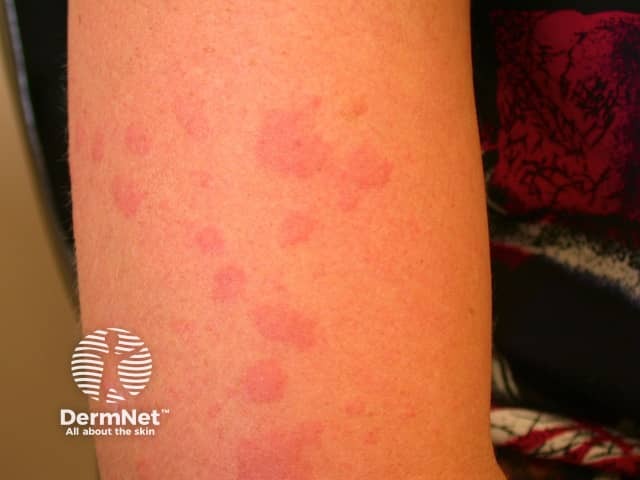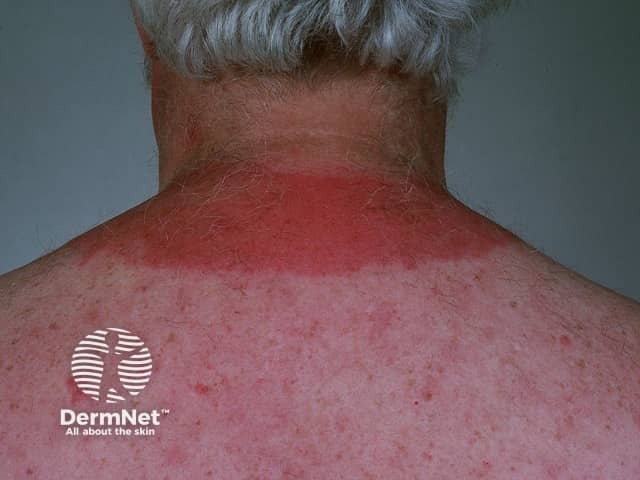Main menu
Common skin conditions

NEWS
Join DermNet PRO
Read more
Quick links
Introduction
Causes
Demographics
Clinical features
Diagnosis
Treatment
Solar urticaria is a rare form of chronic inducible urticaria (hives) in which the skin swells within minutes of exposure to natural sunlight or an artificial light source emitting ultraviolet radiation. The reaction may subside within a few minutes or it may persist for up to an hour or more where it can become very disabling.
The cause of solar urticaria is not clearly defined but may be due to an antigen-antibody reaction. It seems that a chemical created in the body (a photoallergen) reacts with UV radiation to cause an allergic reaction that manifests as urticaria.
Solar urticaria is rare. It can occur in both males and females at any time of life. The mean age of onset is 35 years, but it has occurred in infant children through to those aged 70 years.
A stinging, itchy rash develops within minutes after a short period (less than 30 minutes) of sun exposure. The rash may look like weals and be red and swollen. Often the rash affects areas of exposed skin that are normally shielded from sunlight by clothing, e.g. back. The face and upper sides of the hands that are constantly exposed to the sun may be unaffected or only slightly affected. This may be put down to acclimatisation or 'hardening' of these chronically exposed areas.
If large areas of the body are affected, the loss of fluid into the skin may result in light-headedness, headache, nausea and vomiting.
Areas covered with thin clothing may also be affected, depending on the ultraviolet rays being emitted and the sheerness of the fabric.

Solar urticaria

Solar urticaria
The clinical features of solar urticaria may appear similar to other photodermatoses so it is important to take an accurate history from patients. Defining features of solar urticaria include:
Phototesting is used to confirm the diagnosis.
As soon as a patient is shielded from sun exposure the rash begins to disappear spontaneously within several minutes to a few hours. The rash clears away completely without leaving a mark.
Patients with solar urticaria must take measures to avoid or minimise sun exposure by following sun protection strategies including sunscreen and sun protective clothing. Oral antihistamines may be helpful in reducing weals and minimising pruritus but they rarely prevent the reaction altogether.
For patients that react severely and are unable to manage their condition through preventative measures, phototherapy and/or photochemotherapy may be considered. These treatments desensitise the patient to UV radiation and are often performed prior to the summer months. Desensitisation is often short-lived and repeated therapy may be needed.